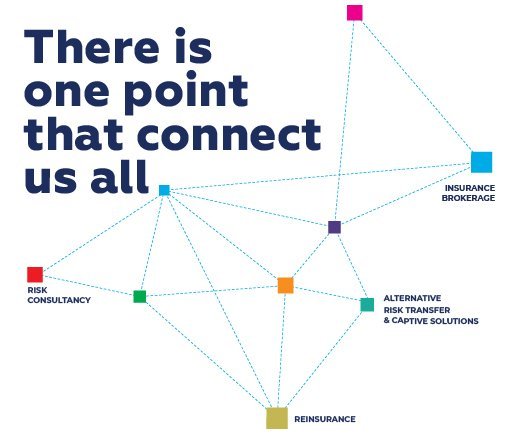Global Risk Perspectives - Monthly insights on geopolitics, trade & climate
Back to articlesJorge LuzziCEO da RCG

01.06.2022
The Insurance Market: When Are We the Cover, When Are We the Covered?
There’s a lot of talk about economic recovery after the health and economic crises we faced over the past two years. Meanwhile, political rifts deepen internationally and the market groans under seemingly unabating tension. In that light, the insurance market lives in this state of duality where it is both a protector and an entity in need of protection. How do you keep the thin line between the two states clear and unbroken while you operate securely and deliver high performance?
To what extent are market indicators positive
First off we need to admit that, while Covid transmission rates have dropped since its greater peak, we’re still living in a world shaped by the pandemic — which means the marks made upon the corporate fabric by Covid-19, be it on the financial or insurance markets, have not gone away altogether, despite positive signs of recovery.
Globally, the outlook on this universe was optimistic and showed faith in progress until at least the final month of 2021. Per the latest sigma study of the Swiss Re Institute, the expectation was global insurance would surpass $7 trillion by mid-2022. To arrive at that conclusion, specialists looked into growing concern among people and companies about risk — a factor that has driven the search for cover and a continual strengthening of insurance prices in commercial non-life lines.
In Brazil things proceeded in a similar fashion: per data from the Oversight Board on Private Insurance (Superintendência de Seguros Privados (Susep)), the number of insurance policies will continue to grow and, according to Conjuntura CNseg, the insurance segment will likely grow 10% this year as compared to the preceding cycle. Forecasts per sector show Health going up by 7,1% to 12,3%; Property and Civil Liability may go up by 4,6% to 12,5%; Personal Accidents will come in at between 3,8% and 9,7%; and, finally, Capitalization may evolve up to a point between 2% and 6.9%.
A juncture of uncertainty
Even with the high rates that allow us a bit of conservative optimism, we should not forget that over the past few months that the tax and geopolitical landscapes of the world have suffered upheavals that impact economies, trade, logistics, supply chains and even consumer behaviour. Such changes will partly affect the forecasts above.
In particular I would like to recall the words of Diogo Castro e Silva, investor and former Latin America director of the Fosun Group. "Only a few times in recent history has a year pushed off with a heavier load than 2022 has done. Growing geopolitical risk of confrontation between major powers unlike anything since the Cold War. Stagflation making a comeback after 30 years. Elections of massive import, like the one in France, and deeply polarized societies. Last, but by no means least, the world is still crawling through the worst pandemic in a century.”
The Watershed
One might say that, in the Insurance and Risk Management market, the thin line between our role as protectors and receivers of protection is made clear when we look back to our centuries-old history where we adapt to the most diverse threats. New risks are, to some extent, similar to old ones, arising from economic, corporate and political instability. When these emerged, they were unknown and under-researched by companies. Therefore, our function as brokers and risk managers was to study each silo, join up with partners from the relevant segment and weave bespoke solutions through our processes. New realities in loss of business will give rise to new impacts. While loss of business has been traditionally hitched to a catalysing claim based on property damage, right now, after the pandemic, business disruption may more frequently arise from a primary event that has no connection with property damage.
In short, we will continue to draw on technology and highly-skilled expert teams to increase security for our customers’ investments, optimize mitigation of property-related losses and guarantee business continuity to the utmost of our abilities. Our role, now and forever, is to convert contemporaneous risk into opportunity. This is the tack the whole sector should take as it faces present and future upheavals.
By Jorge Luzzi, RCG CEO
By Jorge Luzzi, RCG CEO



